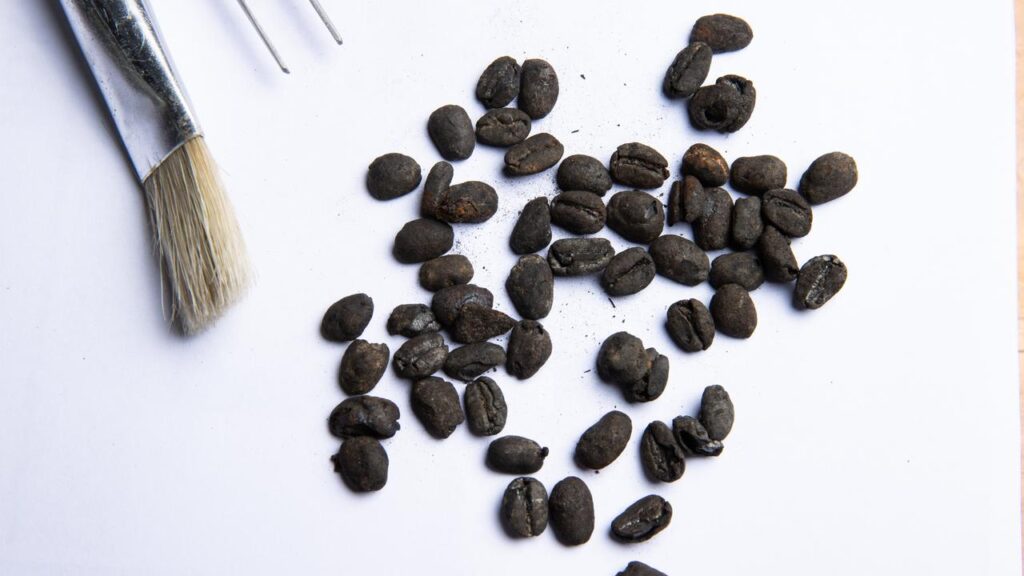Rare coffee beans dating back 167 years ago were found by archaeologists working on the Metro Tunnel project
Perfectly preserved coffee beans dating back more than 167 years have been found by archaeologists working on the Metro Tunnel project, confirming that Melbourne has always been Australia’s coffee capital.
The archaeologists were digging up the historic remains of a grocery store near the site of the Young and Jacksons pub on Swanston Street, in Melbourne’s CBD, in 2018 when they discovered the artefacts.
The John Connell general store burnt down in the Gold Rush era, which preserved more than 500 coffee beans along with English biscuits, fruit remains and other perishables that would not ordinarily have lasted the test of time.
Excavation director Meg Goulding said the items had been carbonised and preserved in a similar way to the ancient Roman city of Pompeii when it was buried under volcanic ash.
“This was just a general store that was servicing the gold fields at the time,” she said.
“He was there from the early 1850s, we know that the gold rush started in 1851.”
Artefact manager Jennifer Porter said the beans were a “rare find”.
“It’s such a rare sight to find such a rich assemblage of different types of artefacts,” she said.

Acting Premier Jacinta Allan said the discovery of coffee beans demonstrates Melbourne’s iconic coffee culture goes way back to the 1850s.
“The discovery proving coffee has long been important to Melburnians,” she said.
“Remarkably, the coffee beans have been preserved and they are now part of the rare finds that we are uncovering as we get on and deliver the Metro Tunnel project.”
It’s now hoped all of these items, including the coffee beans, will be put on display for the public to see.





